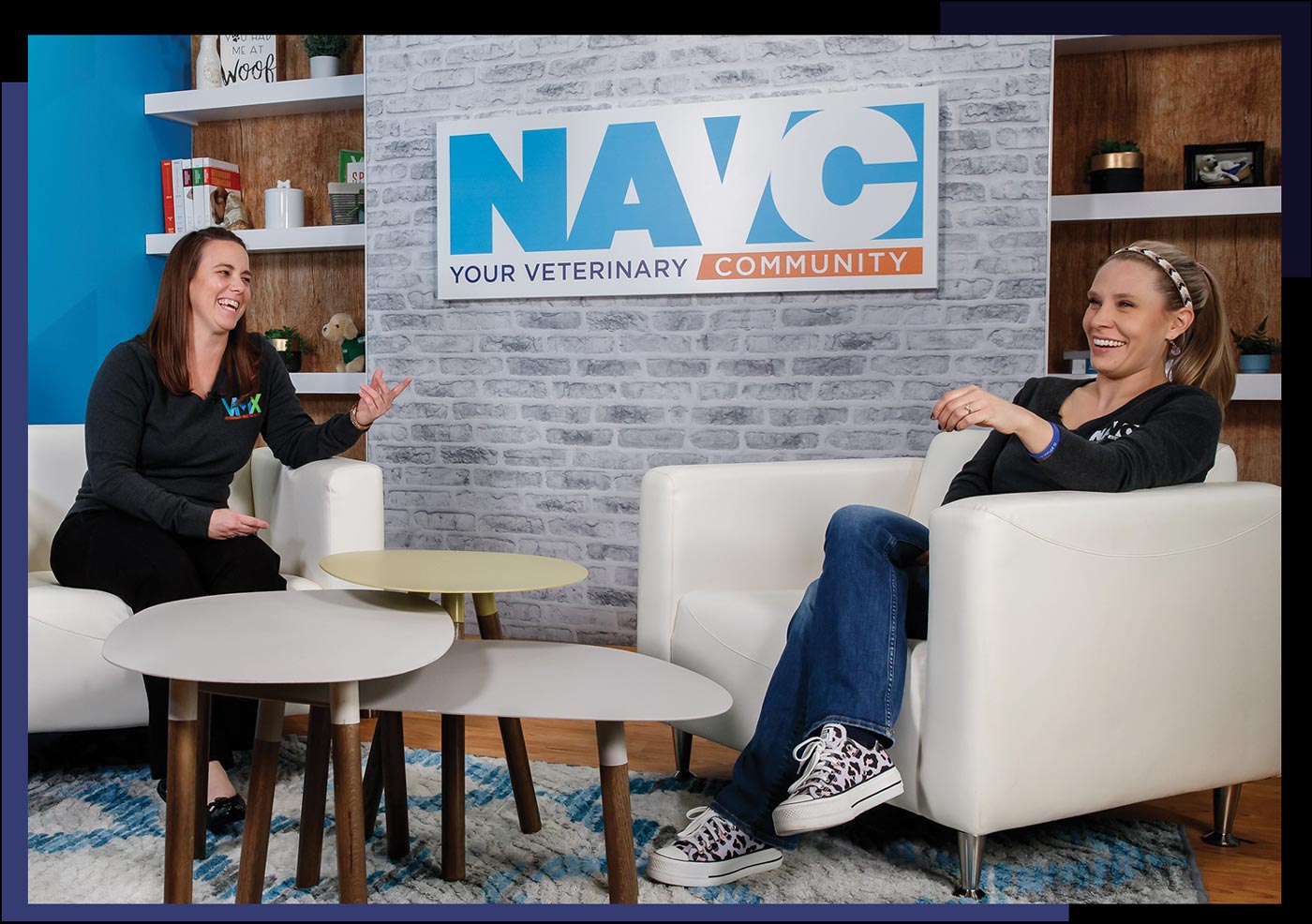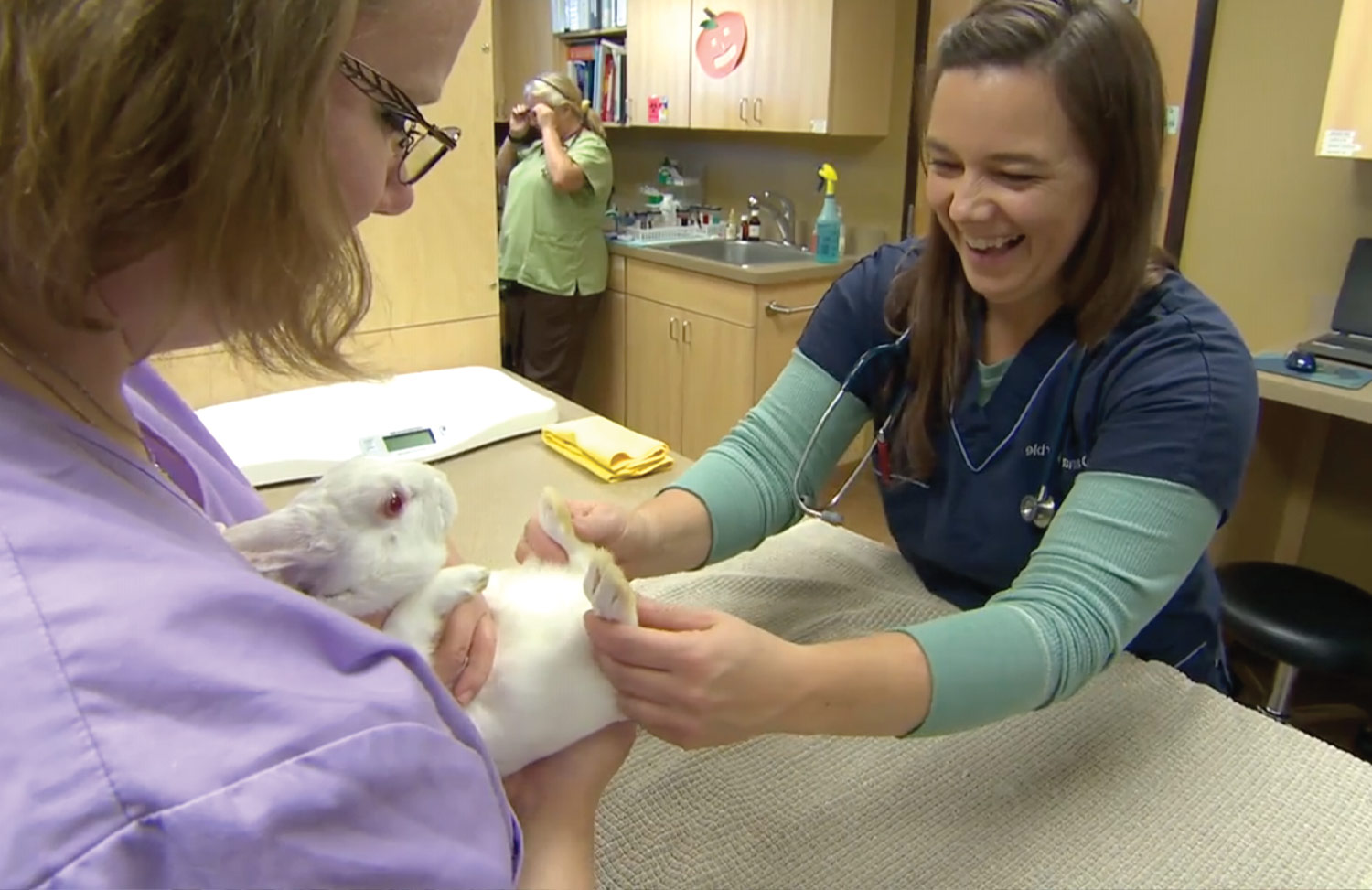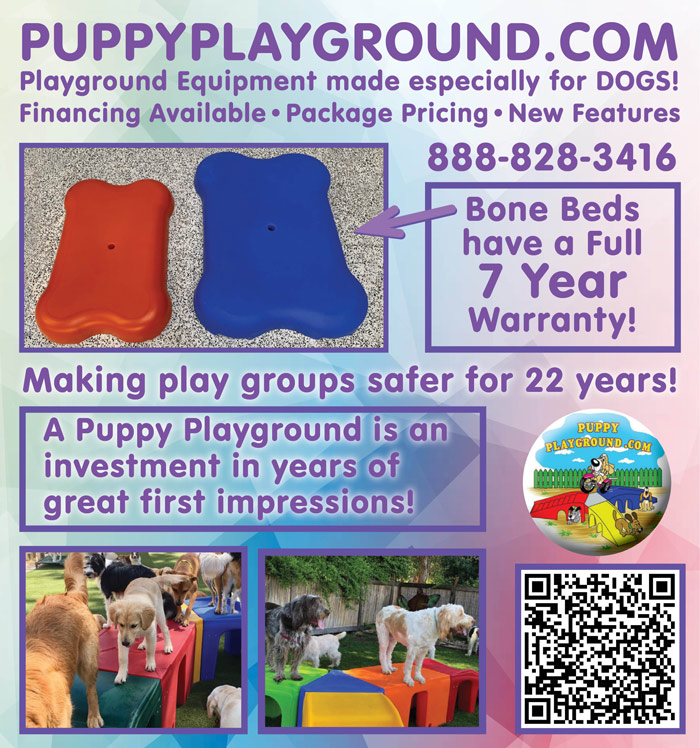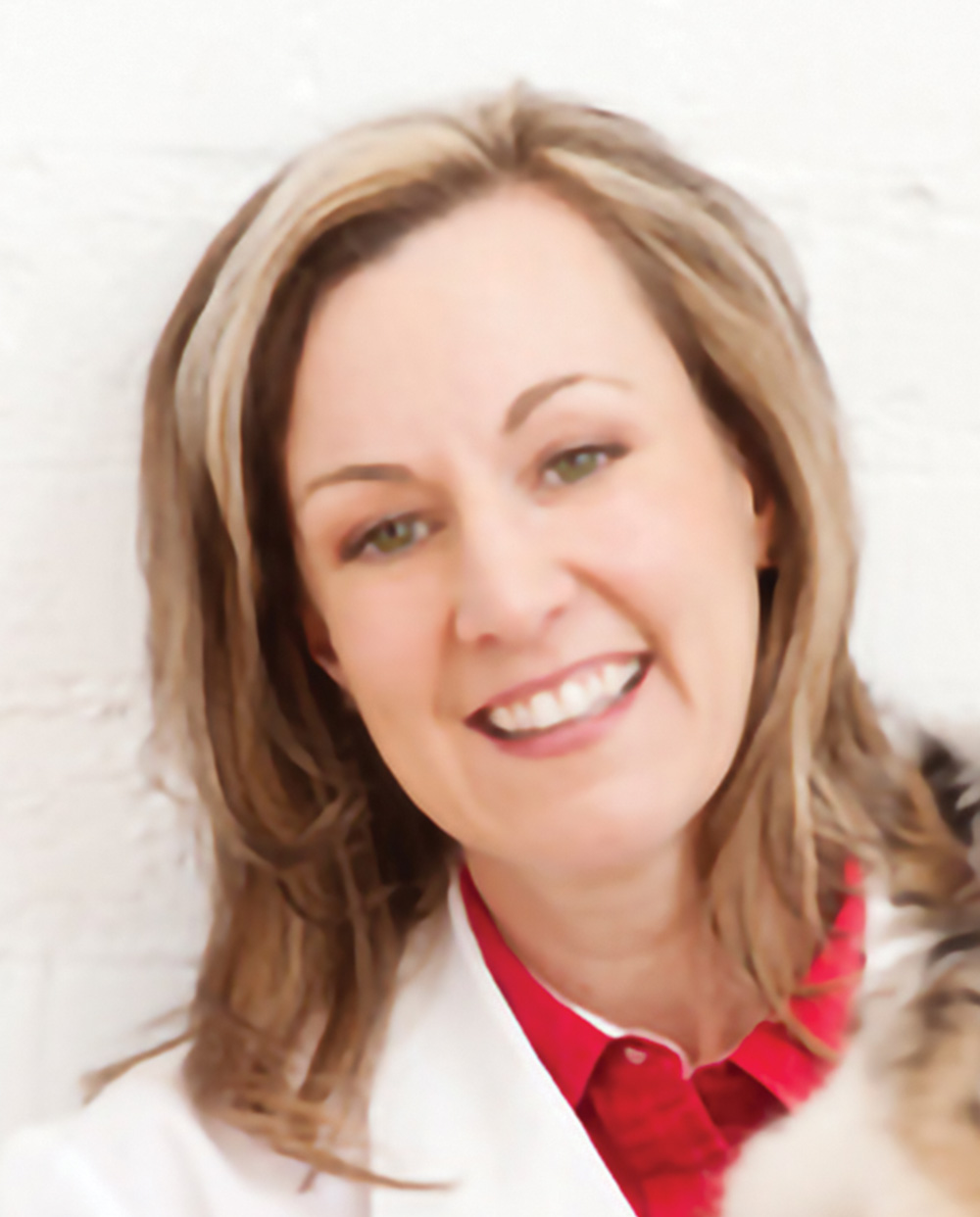


By Kathryn Primm, DVM
Photos provided by North American Veterinary Community (NAVC)
Photos provided by North American Veterinary Community (NAVC)
ike most veterinarians, my average day is a mix of routine and regular. Probably the biggest difference is I have about three different ‘average’ days,” shares Dana Varble, DVM and CVO of North American Veterinary Community (NAVC).
“I work at a first-opinion and referral exotic-pet-only practice, Chicago Exotics Animal Hospital,” Dr. Varble continues. “At Chicago Exotics, I see appointments, perform surgery, and collaborate with my colleagues, other exotic-exclusive veterinarians, veterinary technicians, veterinary assistants, our client care team, and practice manager. I get to see everything from routine annual exams on house rabbits to the rare—I just performed a spay surgery on a mongoose, for example!”
Dr. Varble started with a B.S in Zoology from Southern Illinois University when she graduated Suma Cum Laude, then headed off to University of Illinois for her veterinary degree. From there, she pursued a non-traditional clinical rotation schedule at many colleges across the country to follow her exotic animal dream. In addition, she achieved her Certified Association Executive (CAE) designation from ASAE in 2021. Being a CAE means that she has proven her commitment to association leadership with advanced study in things like diversity, business operations and leadership, which plays a big part in her role with the NAVC.
“Most days I work from home for NAVC as the Chief Veterinary Officer,” she shares. “As the CVO, my primary role is to lead our programs team who design and oversee our in-person education events while contributing to our virtual education, leadership teams, providing data and information to our board of directors, and consulting and speaking on behalf of NAVC through our many PR opportunities.”
“As I transitioned within my roles at NAVC, I was lucky to be able to continue my international work, currently working with the NAVC team to promote international veterinary education with BSAVA, WSAVA, SEVC, and LAVC, among others.”
-Dr. Dana Varble


“As I transitioned within my roles at NAVC, I was lucky to be able to continue my international work, currently working with the NAVC team to promote international veterinary education with BSAVA, WSAVA, SEVC, and LAVC, among others. And I serve as a board member to the Veterinary Innovation Council,” she shares.
In addition to all of her important roles, she writes the Today’s Veterinary Practice column called “The Secret Life of Vets” in which she explores diverse topics like personal and professional development and wellbeing, while letting her sense of humor shine with fun analogies and light-hearted tone to remind us that we are more than just clinicians—we are human beings first. The column recently won the silver and bronze awards from the Florida Magazine Association’s annual Charlie Awards for best writing in the professional trade and technical category.
When asked what the biggest challenge is in caring for exotic pets, Dr. Varble explained it is the lack of readily available, evidence-based resources for their medical care, because they are not as commonly seen in veterinary offices as dogs and cats are.

Dr. Varble finds excitement and passion in seeing the innovations and technologies grow as our industry gains access to developments in human medicine.
“We have to work hard in exotic pet medicine to promote and enable research, peer-reviewed publications, and evidence-based medicine to be sure we are offering these devoted pet owners the very best care we can,” she continues. “This is one of the reasons I have continued to serve as the managing editor for the Journal of Herpetological Medicine and Surgery for the Association of Reptile and Amphibian Veterinarians.”
For veterinary medicine in general, Dr. Varble finds excitement and passion in seeing the innovations and technologies grow as our industry gains access to developments in human medicine.

Photo by Jenny May Stringer Photography

“Look at how AI is being utilized for idea generation, radiology interpretation, diagnostic assistance, and how new immune therapies are being used as innovative cancer treatments,” Dr. Varble continues. “Now, more than ever, veterinary medicine and human medicine are more entwined with developments and innovations in technology, pharmaceuticals, and diagnostics, often occurring simultaneously.”
Through her hard work and willingness to don many hats, Dr. Varble is able to advance the veterinary profession as a whole, both in the exam room and behind the scenes, to create a better world for all species.

